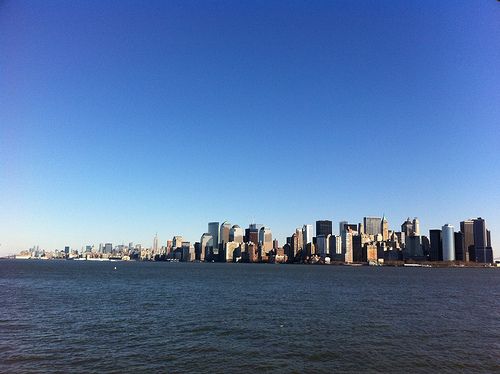New York roofs get cool
NASA scientists studying the roofs of New York City buildings during last summer have found that a white roof can be up to 42 degrees Fahrenheit cooler than a traditional black roof.

NASA scientists studying the roofs of New York City buildings during last summer have found that a white roof can be up to 42 degrees Fahrenheit cooler than a traditional black roof. It has long been understood that dark surfaces absorb more of the suns energy than lighter surfaces, a phenomenon known as ‘albedo’, but this is an important study looking to quantify the effect.
The study looks at the cities efforts to reduce its ‘urban heat island’ effect. This is a phenomenon where built up areas have higher temperatures than the surrounding countryside, due to the darker concrete and tarmac surfaces of the city absorbing more energy than a green surface. The impervious hard surfaces of a city also create dryer areas, which will naturally heat up faster than damp soil and vegetation. New York has a particularly pronounced urban heat island, especially at night.
Mayor Bloomberg is looking to reduce greenhouse gas emissions by 30 per cent by 2030 and one method to achieve this involves using white roofing material on buildings. The study looks to assess the long term viability of using this covering.
The study shows some surfaces reached 170 Fahrenheit (77 degrees Celsius) on the hottest day of the year, which set a record for electricity use in the city, whilst whitened roofs were up to 42 degrees cooler. Stuart Gaffin, lead author of the study at Columbia University says, "Cities have been progressively darkening the landscape for hundreds of years. This is the first effort in New York to reverse that. It's an ambitious effort with real potential to lower city temperatures and energy bills. City roofs are traditionally black because asphalt and tar are waterproof, tough, ductile and were easiest to apply to complex rooftop geometries. But from a climate and urban heat island standpoint, it makes a lot of sense to install bright, white roofs. That's why we say, 'Bright is the new black.'"
It will be especially important to find ways of maintaining the brightness of the roof, and what methods and materials best maintain their brightness over the working life of the roof material. Two methods in particular were analysed in this study: professionally applied white membrane coverings at $15 to $28 per square foot, to white coatings at 50 cents per square foot. The former held up particularly well over a four year period, maintaining their Energy Star standards set by the EPA. The cheaper coating performed well, but not nearly as effectively as the membranes. Gaffin however, claims the cheaper remedy is extremely effective, being a cheap and easy way to dramatically change the albedo of the city.
The project is an innovative and surprisingly effective way of reducing the ambient temperature and shows that cities can lead the way in the fight to limit the effects of climate change.
